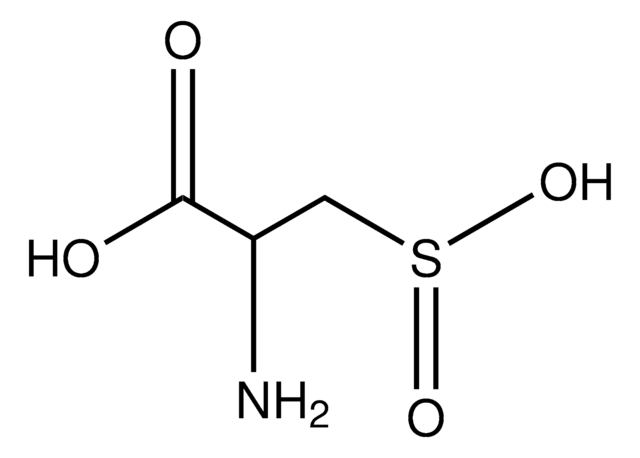SMB00908
4-Hydroxy-4-methyl-2-oxoglutaric acid dipotassium salt
95-105% (titration)
Synonyme(s) :
4-Hydroxy-4-methyl-2-oxoglutaric acid dipotassium salt, Parapyruvate
Sélectionner une taille de conditionnement
Sélectionner une taille de conditionnement
About This Item
Produits recommandés
Essai
95-105% (titration)
Forme
powder
Score du produit alternatif plus écologique
old score: 46
new score: 35
Find out more about DOZN™ Scoring
Caractéristiques du produit alternatif plus écologique
Safer Solvents and Auxiliaries
Design for Energy Efficiency
Design for Degradation
Learn more about the Principles of Green Chemistry.
sustainability
Greener Alternative Product
Couleur
white to beige
Solubilité
water: soluble 10 mg/mL
Autre catégorie plus écologique
Description générale
Application
- to study mitochondrial metabolomics
- to study age related disorders (Alzheimer′s and Parkinson′s research)
Actions biochimiques/physiologiques
Caractéristiques et avantages
Autres remarques
Code de la classe de stockage
11 - Combustible Solids
Classe de danger pour l'eau (WGK)
WGK 3
Point d'éclair (°F)
Not applicable
Point d'éclair (°C)
Not applicable
Faites votre choix parmi les versions les plus récentes :
Certificats d'analyse (COA)
Vous ne trouvez pas la bonne version ?
Si vous avez besoin d'une version particulière, vous pouvez rechercher un certificat spécifique par le numéro de lot.
Déjà en possession de ce produit ?
Retrouvez la documentation relative aux produits que vous avez récemment achetés dans la Bibliothèque de documents.
Filtres actifs
Notre équipe de scientifiques dispose d'une expérience dans tous les secteurs de la recherche, notamment en sciences de la vie, science des matériaux, synthèse chimique, chromatographie, analyse et dans de nombreux autres domaines..
Contacter notre Service technique








